This modestly-sized (and priced) action figure is a fine representative of the detailed and stylish designs featured in David Silva’s spectacular Ceratopsian series.
I first heard of Zuniceratops a good 20 years ago, when Discovery Channel’s documentary special When Dinosaurs Roamed America aired on television. Ranging from 2.2-3.5 meters in length – equivalent of a modern sheep to a (short) cow – the “Zuni horned face” was on the smaller side compared to its relatives at the end of the Cretaceous; however in Turonian-age New Mexico (94-89 million years ago) it was probably one of the largest herbivores in its environment. Despite being fairly well-known from several specimens, as well as its significance for representing one of the oldest ceratopsian genera to develop brow horns, scarcely any toys have been produced to promote this early horned dinosaur. Thankfully, after a not-terrible-but-not-great-either attempt by Geoworld, a far more impressive endeavor was released to the market in late 2020, courtesy of David Silva’s Beasts of the Mesozoic line.
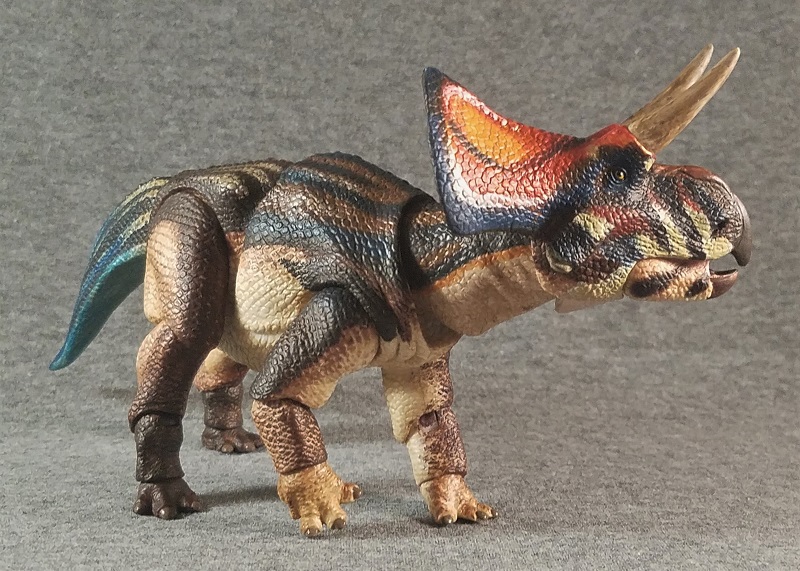
The Beasts of the Mesozoic action figure series has been something of a dream come true for collectors, as well as for David Silva himself. Silva is an experienced toy designer who has produced figures for the likes of Hasbro and NECA in the past; he also runs his own company at Creative Beast Studios. Scientifically-accurate, highly-articulated dinosaur figures are niche in the market which has been virtually nonexistent in the past, so Silva took the initiative to kick-start a line of his own and met with great success. There have been three Kickstarter campaigns to date; the second campaign, which launched September of 2019, was centered around ceratopsians, and hit the main funding goals in just under two weeks. Among these first figures funded was Zuniceratops, officially figure no. 01 of the Ceratopsian series.
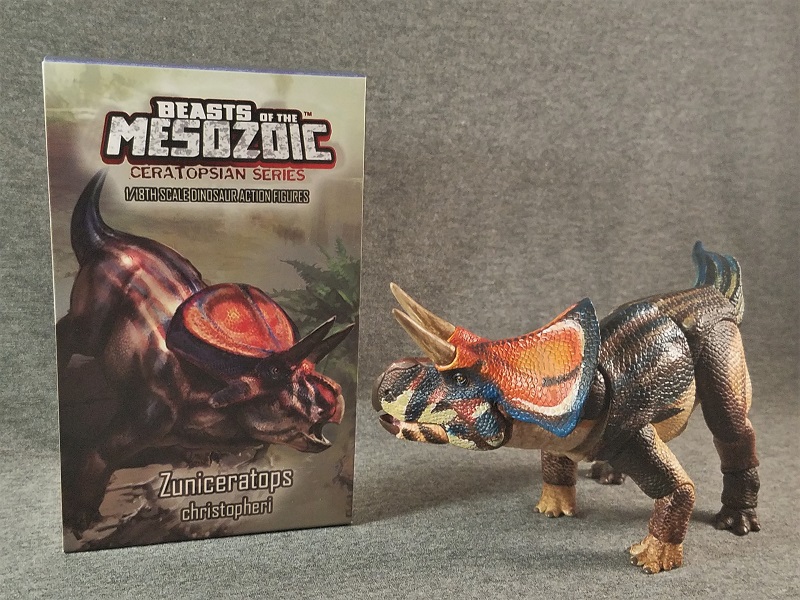
Despite my own enthusiasm early on for the Beasts of the Mesozoic line, I was unable to contribute to the ceratopsian campaign. Action figures of this caliber, of course, also tend to be on the expensive side by necessity, so this review is certainly coming a little late, having only acquired a Zuniceratops for myself two years and two months after the figure was officially released for sale in November of 2020. Reviewing late is better than never, however, so let’s see how this action figure holds up for those still waiting to pull the trigger. Does this little, not-so-little horned face meet the standard it’s marketed at?

The Creative Beast/Beasts of the Mesozoic Zuniceratops measures 21.5 cm (8.5 in) long; although the figure is marketed at 1:18 scale, even by the largest specimens’ dimensions a scale of 1:16 is more accurate. Like all figures in the line, it is carefully packaged in a high-grade collector’s box, decorated with splendid artwork (contributed by Jax Jocson and Carlo Arellano). A fact card about the dinosaur is also included, as well as brief instructions on how to attach the tail safely. A background insert can also be removed from the box for more display options with the figure.

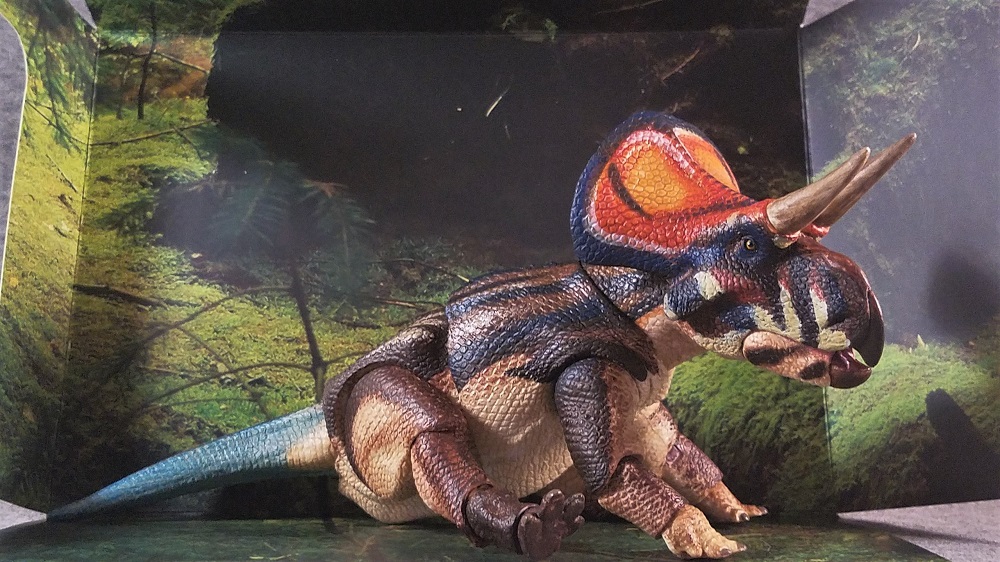
Right out of the box, my copy of the Zuni horned face was able to start showing off its range of motion (with only a little hair-dryer assistance to be on the safe side). Twelve ball-and-socket joints array the neck, limbs, torso and tail, with six swivel/hinge joints equipped in the elbows, knees, and ankles. The figure can twist and turn in a satisfying range of realistic movement, although the sculpt engineering prevents anything too exaggerated. This Cretaceous cow can be posed grazing, prancing, resting, or gearing for combat. My only caveats with the articulation regard two areas: the jaw and the hips. The jaw, which opens on a hinge, can’t open very wide to be a noticeable difference, and it also doesn’t really close, making the animal always look just a bit slack-jawed. The hips, equipped with ball-and-socket joints, have a pretty good range of motion; however, due to the sculpt’s design, swinging the legs forward also swings them out to the side, which is a little awkward for running poses. Overall, however, this figure can display in just about any fashion I want it to, at least within reason. Of particular note are the neck joints and wrist/ankle joints, which are especially fun to fiddle with and largely make up for any other limitations.

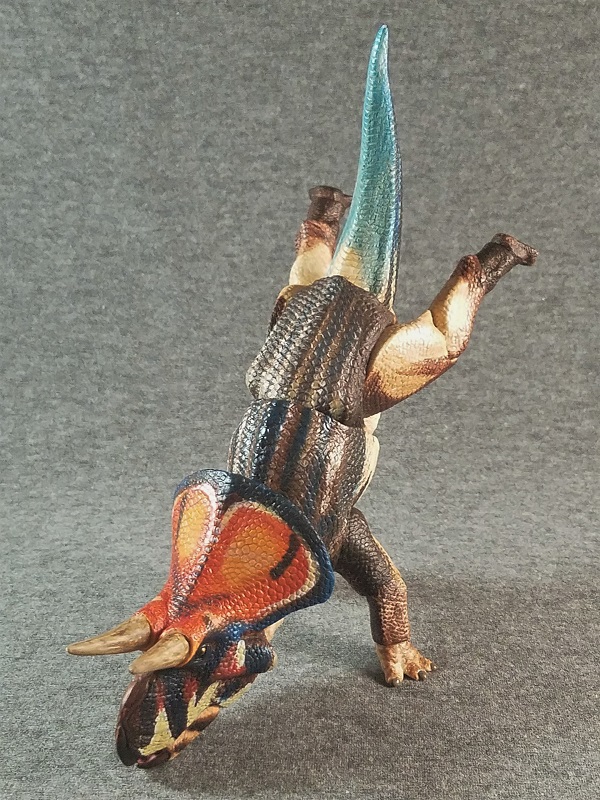
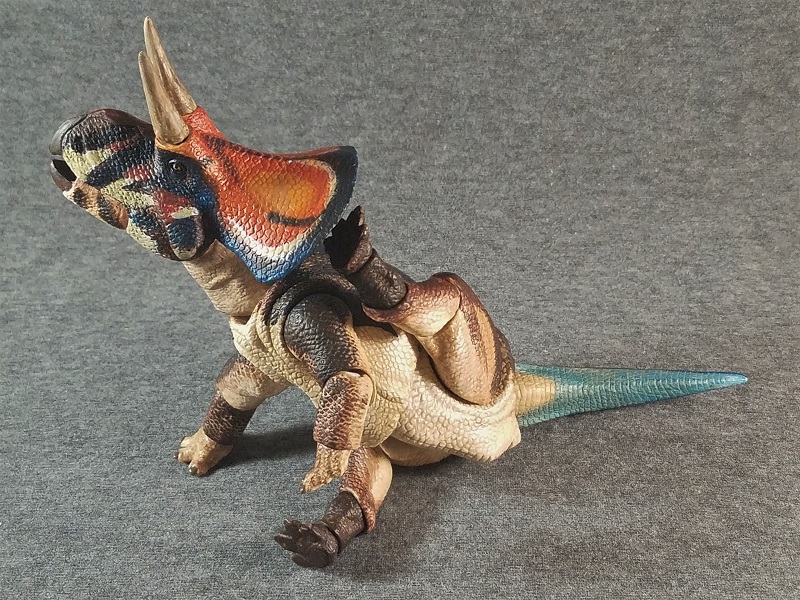
The articulation is very fine on this figure, but probably the first thing one will notice upon opening the box is the coloration – also depicted in the lovely box art. In contrast to the often dull, flat colors seen in more mainstream toys, David Silva takes thorough reference from modern-day reptiles, birds, and amphibians, which are often decorated in a diverse array of hues and patterns to compliment their color vision abilities. For Zuniceratops, Silva’s reference of choice appears to be the North American five-lined skink, with brown and white striping running parallel down the body, punctuated with vivid blue and a loud orange frill. While Zuniceratops obviously didn’t fill the same ecological niche as a modern insect-eating lizard, the striking striped patterns compliment the dinosaur nicely; it’s not hard to imagine the ceratopsian utilizing such bright coloration for infraspecific communication, such as courtship, rivalry, or simply distinguishing age and gender.
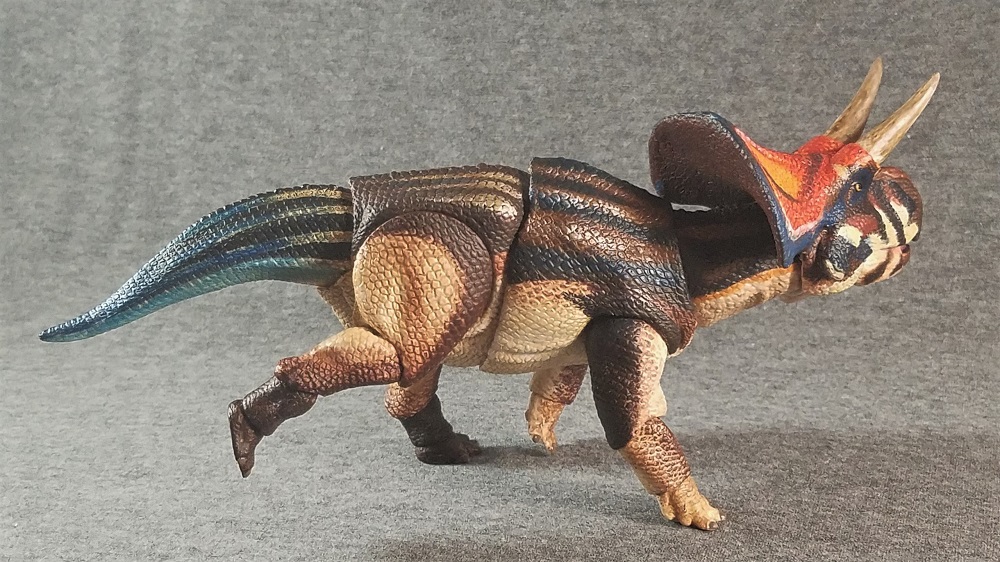
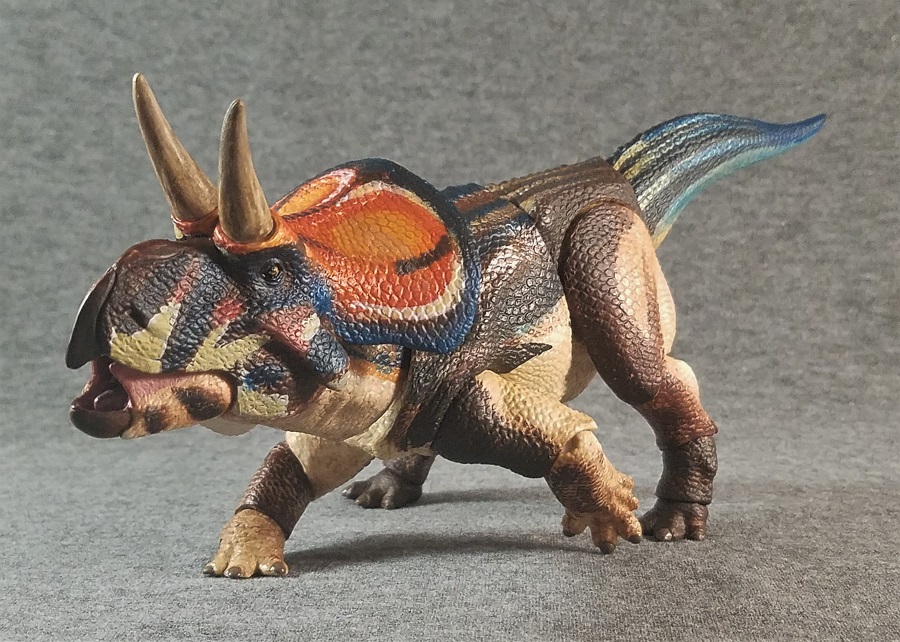
Application of the color scheme is generally very good. Washes of varied brown shades help enhance the scaly details across the legs and belly. The horns are also painted in an irregular brown wash, giving them a naturalistic weathered appearance. The eyes, in contrast, are a neat, bright orange, with a hint of gloss to give the model a convincing sense of life. The striping along the frill and back can be a little sloppy in definition; but not every living animal has perfect, crisply-defined patterns either, so I don’t want to be too harsh here. Overall the range of hues – including light aqua blues, scarlet reds, and rustic browns – is ambitious and attractive to the eye, and I commend the artists for achieving this scheme as well as they do. I should mention, though, that the paint is not immune to scuffing – there’s a tiny white mark that’s developed on the tail where the back hits the body joint from posing the tail at a certain height. Treat with care.
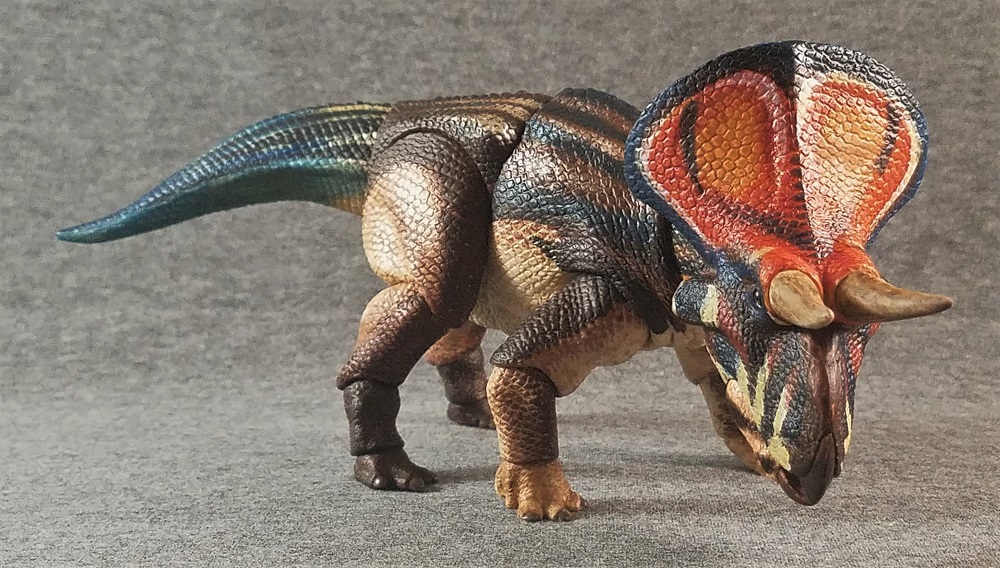
Articulation and appearance are all good, so how does Zuniceratops fare in scientific accuracy, the last major selling point? The answer is very well, once again, but not perfectly; in fact there are some distinct discrepancies I noticed, based on known fossils. General proportions look good on the figure, based on the few skeletal photographs and illustrations I’ve found in cursory research. The body is stocky and the legs are modestly long, not yet displaying the levels of robustness seen in the larger ceratopsians later in the Cretaceous. The tail is still moderately long and muscular, although the neural spines closer to the body could possibly be taller. The most distinguishing features, of course, are those of the head, where one finds the iconic horns and frill. This is the aspect of the toy where details are more questionable. Zuniceratops had only two horns over the eyes, with no nose horn; this is correctly reproduced in the figure, with some speculative bossing along the nasal ridge. This bossing makes the snout look a little deeper than it is at first; however even without the boss the snout appears to built thicker than known fossil skulls, which have surprisingly narrow snouts. The skull could also be a little bit longer than depicted here, with the beak ideally protruding just past the length of the horns. The frill is similarly undersized, whilst the neck is actually too long; this might have been license to achieve better articulation, though. Fossil reconstructions of Zuniceratops’s frill indicate a long, fairly straight-back frill shape, almost resembling part of a cone. The BotM figure, on the other hand, has a more typical curved flare to the frill, like that seen in larger ceratopsians; this, too, might have been a creative decision to avoid impeding articulation, but I can only speculate about that. Just be aware that this figure is not a 100% rigorously-accurate representation.

Despite a few subtle discrepancies in anatomy and articulation, the Beasts of the Mesozoic Zuniceratops has quickly become a highly enjoyable addition to my collection. There are still very few toys of this genera to choose from, but if you want the best quality, then this version is the clear winner – and thanks to its smaller size, it’s one of the cheaper BotM action figures, too! Zuniceratops comes recommended, and once its natural rival Suskityrannus eventually sees release in the same line, the two ought to make a splendid display pair. You can purchase Zuniceratops directly from David Silva’s Creative Beast website, or you can also check specialty retailers such as Everything Dinosaur and Big Bad Toy Store.
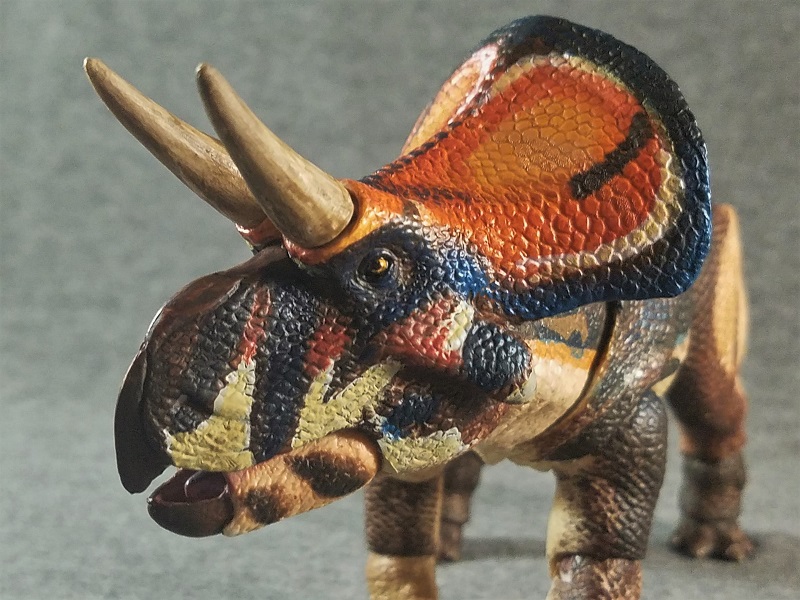
Support the Dinosaur Toy Blog by making dino-purchases through these links to Ebay and Amazon. Disclaimer: links to Ebay.com and Amazon.com on the The Dinosaur Toy Blog are often affiliate links, when you make purchases through these links we may make a commission

First review of 2023, woo!